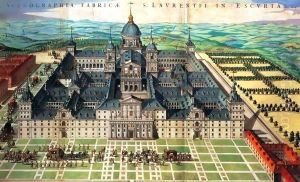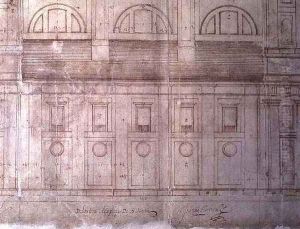Juan de Herrera Paintings
Juan de Herrera was a prominent Spanish architect, mathematician, and geometrician whose work and style came to define the Spanish Renaissance and exerted a lasting influence on Spanish architecture. Born in Mobellán, Cantabria, Spain, in 1530, Herrera's contributions to architecture were not only innovative in terms of design and aesthetics but also in the application of mathematical precision in architectural planning.
Herrera's education and early career are somewhat obscure, but it is known that he studied at the University of Valladolid and later entered the service of King Philip II of Spain. His most significant appointment came in 1563 when he was made the royal architect, and from this position, he was instrumental in the design and construction of some of the most iconic structures of the Spanish Renaissance.
The hallmark of Herrera's architectural style is characterized by a stark, rigid, and geometric simplicity, a departure from the plateresque style that preceded him. This style came to be known as 'Herrerian', a term that not only commemorated Herrera but also defined an era of Spanish architecture characterized by severe, monumental buildings with a strong sense of order and symmetry.
Perhaps Herrera's most famous work is the Monastery of San Lorenzo de El Escorial, located northwest of Madrid. Commissioned by King Philip II, the construction of El Escorial began in 1563 and was completed in 1584. Herrera took over the project in 1567, following the death of the original architect, Juan Bautista de Toledo. Under Herrera's direction, El Escorial was transformed into a monumental complex that served as a royal palace, monastery, museum, and library. It is a masterpiece of Renaissance architecture, showcasing Herrera's precision and minimalist aesthetic.
Aside from El Escorial, Herrera's other notable projects include the redesign of the Royal Palace of Aranjuez and the completion of the Cathedral of Valladolid. Beyond his architectural achievements, Herrera also contributed to engineering, particularly in the realm of hydraulic works and canal construction, showcasing his versatility and the breadth of his talents.
Juan de Herrera passed away on January 15, 1597, in Madrid, Spain. His legacy is a testament to the intellectual and artistic ferment of the Spanish Golden Age, and his works remain a significant part of Spain's cultural heritage, admired for their architectural purity and the innovative integration of form, function, and mathematical precision.

